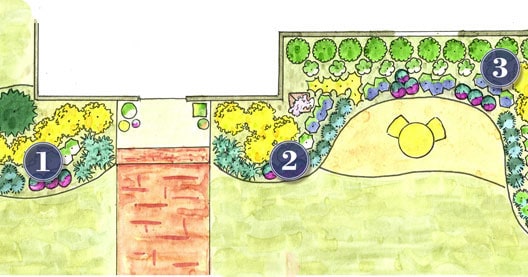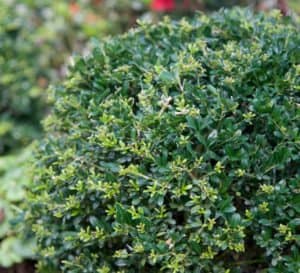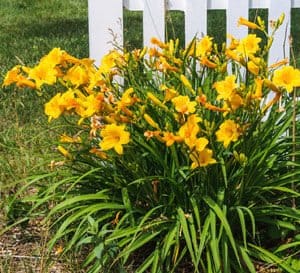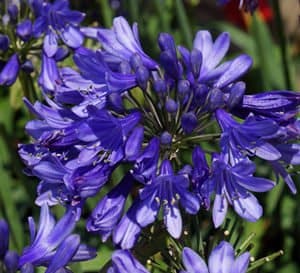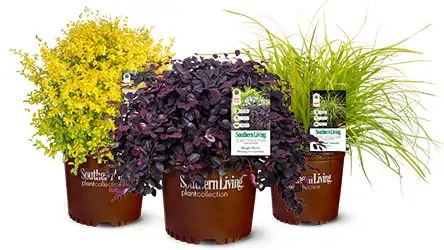Designing a landscape is a lot like creating a piece of art. Though the tools may be different, the ultimate goal is the same: create harmony and unity throughout the composition. We build cohesion in a garden or landscape through careful integration of plant materials, hardscape elements, and their associated colors, textures, lines, and forms.
The ‘Sunshine’ Ligustrum landscape applies several design strategies to create continuity throughout the planting. Each can be applied at various scales, from container design to landscape-level planning. Try incorporating one or more elements in your next garden design. 
1. Repetition
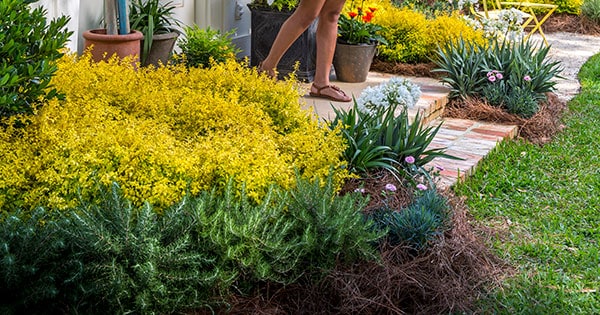
Color, plant materials, and accents are repeated throughout the length of the planting to establish rhythm and movement. Repetition helps to create the harmony we are striving for, but there is a fine line in balancing variety versus monotony. Too much of any one element can make a garden feel boring or uninteresting, while too many different elements can create clutter and confusion. In this example, five different plants and the dinette set are used to repeat the yellow hues, which provides repetition without over-using any one element.
2. Massing
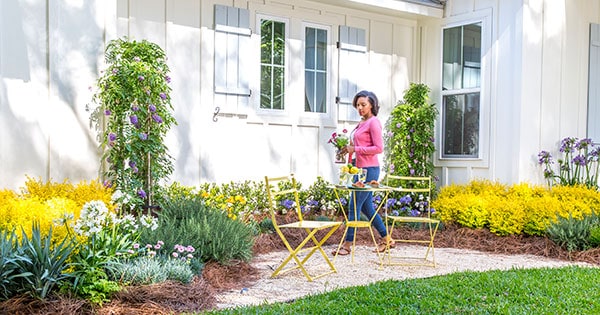
Notice the individual plants in this landscape, with the exception of a few accents and structural elements, are planted in groups rather than individually. This creates blocks of color and texture that provide far greater visual impact than individual plants. Plant groupings also balance the visual weight or mass of each plant material within the larger framework of the home and garden.
3. Color
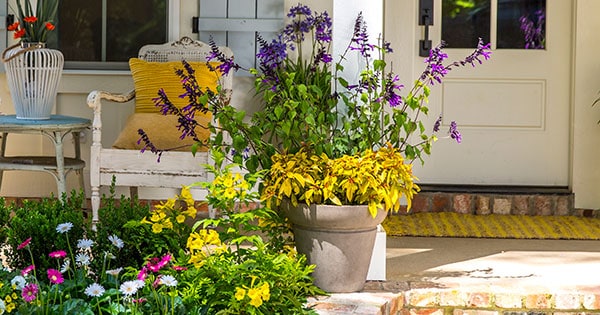
Color adds interest and evokes emotion in a composition, whether a painting or a planting. Warm colors (red, orange, and yellow) give a feeling of warmth and excitement, while cool colors (green and blue) are calming. The golden hues threaded throughout this garden create a warm and welcoming atmosphere.
The way colors are combined can have a large impact on how individual colors appear as well as the overall feeling of a planting. The classic combination of yellow and purple hues in this garden are an example of complementary colors. Through a trick of the eye, complementary colors look better together than they do by themselves. Their hues are more vivid and they add a certain energy to the garden.
4. Structure
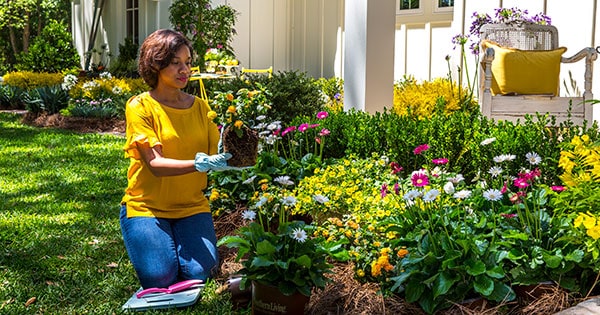
Evergreen shrubs create a lasting framework for this planting and stability to the overall design. Low Rider™ Holly and Irish Mint™ Euonymus provide a year-round backdrop of greenery upon which the golden motif of this garden rests. Also an evergreen, ‘Sunshine’ Ligustrum carries the vibrant theme of the design across the seasons. Well-placed hardscape elements, specimen trees, and evergreen shrubs all contribute to the structure of a garden and seasonal continuity. Evergreen perennials including Chef’s Choice® Rosemary, Evergreen Stella™ Daylily, and Ever Sapphire™ Agapanthus add textural diversity to this garden’s bones.
5. Anchoring
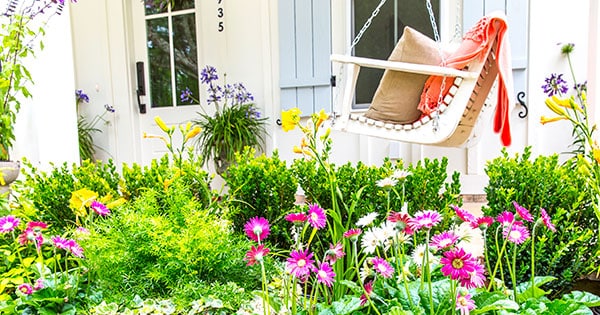
A successful garden builds off the existing structures and natural features of a site. We don’t want a garden to look as if it floating in space. Instead, the planting needs to connect visually to the home and larger landscape. This is where scale or proportion play a role. Scale describes the relative size of one component of a landscape compared to another. There are many ways to connect or anchored a garden to the home. We use a stair-stepping of plant material, particularly at the edges of the planting and corners of the home. Taller plant materials, large shrubs, vertical elements, or large groupings can all be used to gradually step down the height and mass of a planting to create a graceful transition.

